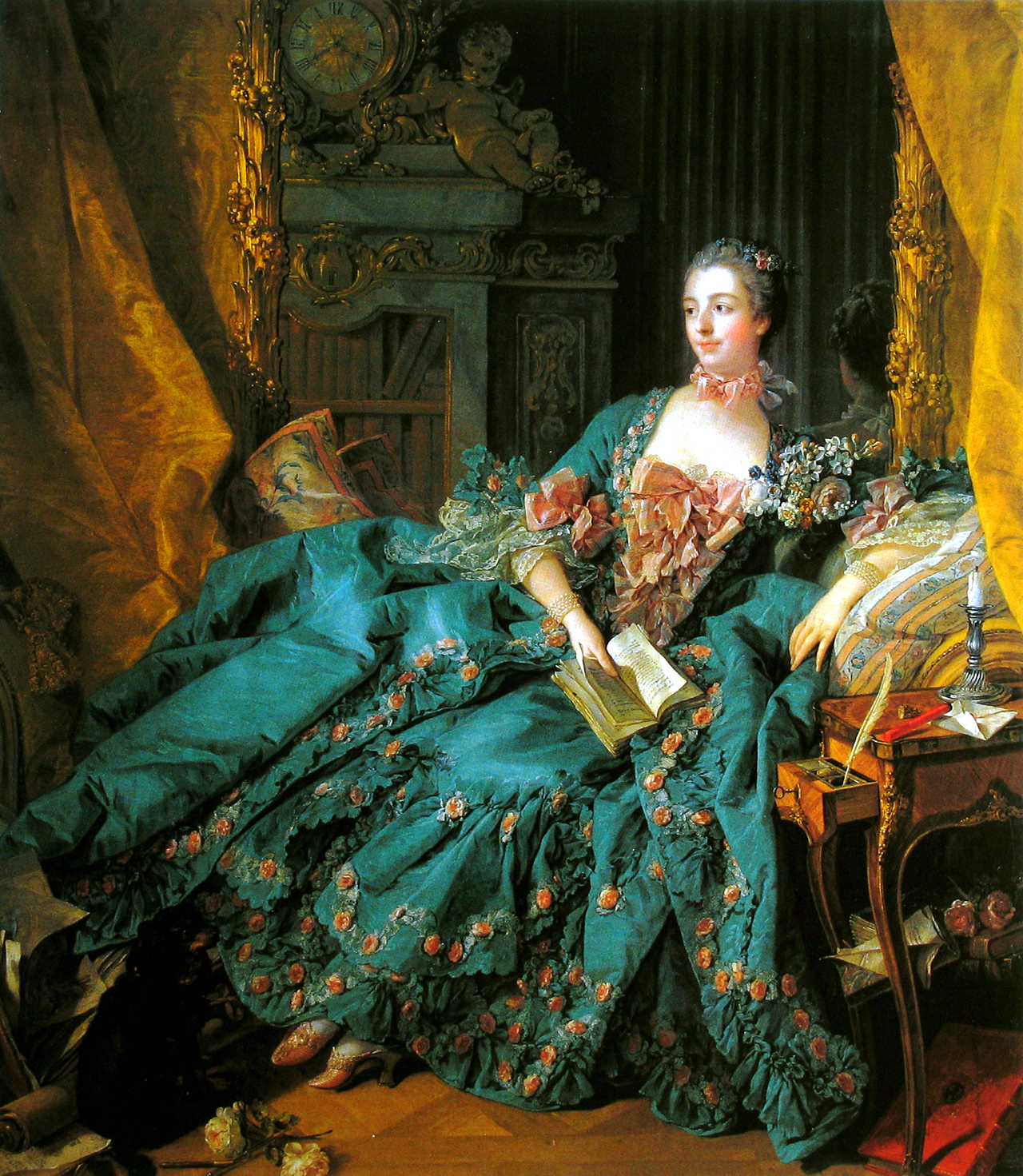The blog to end all blogs. Reviews and comments about all and everything. This blog is NOT affiliated with YouTube, Wikipedia, Microsoft Bing, Gemini, ChatGPT or any commercial vendor! Links don´t imply endorsement. Many posts and comments are ironic. The blogger is not responsible for comments made by others. The languages used are English and Swedish. Content warning: Essentially everything.
Thursday, August 9, 2018
Transgendering the Rococo
A review of Melissa Hyde´s "Making Up the Rococo: Francois Boucher and His Critics".
The Rococo is an art style that flourished during the reign of king Louis XV of France (who died in 1774). It's also closely associated with the king's official mistress, the legendary Madame Le Pompadour. The most well-known Rococo painter was Francois Boucher. Already during its heyday, the Rococo was severely criticized, accused of being frivolous and indecent. After the death of Louis XV, and even more after the French Revolution, the Rococo was replaced by the more sober and serious Neo-Classical style in both art and architecture. After a short revival under Napoleon III, the Rococo definitely went out of fashion, and every one who still admires Boucher risks being rebuked for having really bad taste.
Naturally, a much-maligned art style such as this is due for a reappraisal. The rehabilitation is made by Melissa Hyde, an associate professor of art history. Not only does Hyde seem to like Boucher, she even suggests that the Rococo was feminine, transgendered and somewhat gay!
The Rococo was connected with aristocratic culture. But what exactly does that mean? According to Hyde, the French aristocracy had more gender equality than was considered usual at the time. The sexes of elite society were seen by outsiders (and critical insiders) as too similar and uniform. In the upper class salons, men and women shared ideas and tastes, and frequently even appearances. The fact that both men and women used make up was particularly damning to the critics. (Hence the title of Hyde's book.) Wealthy women played a prominent part as financiers or buyers of art, and sometimes even as painters. To the critics, it seemed as if French culture was controlled by women. The most obvious symbol of female influence was Madame Le Pompadour, the upstart who had become the de facto ruler of France by her unnatural liaison with Louis XV.
Hyde further points out that cross-dressing and out-right transvestism were socially acceptable, at least in elite circles. This can be seen in theatre plays from the period. They frequently featured gender play, travesty roles and cross-dressing plots. Pompadour herself played male roles in theatre plays at the royal court. In anti-royal propaganda, Louis XV was compared to a transvestite. There are also examples of homoerotical theatre. Charles-Simon Favart composed comic operas where the male and female roles are similar, have similar names, and the male lead is played by a woman! It was quite common that women dressed and passed as men, and men as women. One male heterosexual transvestite even published an autobiography about his life as a woman. Hyde comments: "Travesty begins to mutate into transvestism".
Francois Boucher, the famed Rococo painter, was very much a part of this context. Favart was one of his friends, and there are several connections between Boucher's art and Favart's comic operas. Boucher often painted pastoral motives. Many theatre plays with transgendered themes were also based on pastorals. Boucher's critics often complained about the male and female characters on his paintings being too similar. Indeed, Boucher did avoid the standard artistic conventions about how gender differences should be depicted. Shepherds appear in roles and postures that were traditionally seen as feminine, and shepherdesses appear in postures seen as masculine. Often, Boucher used the same models for both female and male characters on his paintings! He was also very fond of painting the mythological motif of how Jupiter in the guise of a woman attempts to seduce the female nymph Callisto. Since both protagonists look like women, the paintings of Jupiter and Callisto look lesbian!
Another connection between Boucher and high society was, of course, Pompadour herself. She was his foremost patron, and Boucher made several portraits of her. One of them shows Pompadour at her make up table. As already pointed out, make up was used by both men and women among the aristocracy. Indeed, Boucher was often criticized for using pink colours in his paintings, pink being the preferred colour of ladies applying make up.
Many of Boucher's critics were supporters of the Enlightenment, the most prominent being Denis Diderot (although his criticism wasn't published until after his death). Hyde believes that the Enlightenment, while being positive overall, nevertheless had a darker side: misogyny. The Enlightenment philosophers emphasized the differences between men and women, seeing the men as better. They therefore despised "effiminate" aristocratic culture. The backstage rule of Pompadour, and the political impotence of the king, was particularly damning. The decadent aristocrat was stereotyped as effete, and the decadence of French culture was blamed on the influence of women. The gender ambiguity of the aristocracy was naturally seen in a negative light, and that was one of the reasons why Boucher came under attack. Not only was his art rejected as frivolous, indecent and lacking in serious political message. As already indicated, it was very specifically accused of minimizing gender differences, making men and women look alike.
I have no idea whether the analysis in this book is correct or not. However, it's interesting and written in a relatively accessible style. The last chapters on pastorals, comic operas and Boucher's use of models, are almost entertaining. I recommend the book to all serious students of art history in general, and the conflict between the Rococo and Neo-Classicism in particular.
Subscribe to:
Post Comments (Atom)

No comments:
Post a Comment